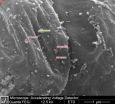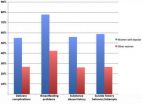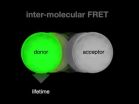(Press-News.org) DENVER – Researchers have developed a novel technique for detecting ALK rearrangements in non-small cell lung cancers (NSCLCs) that is more sensitive and easier to perform than currently available techniques. The technique can help enhance the routine practice of diagnostic ALK testing on NSCLCs, which is crucial for identifying patients with advanced NSCLC who are most likely to benefit from targeted therapy with an ALK inhibitor.
None of the current three routine methods used to detect ALK rearrangements in NSCLC is without drawbacks, especially for tissue specimens that are fixed in formalin and embedded in paraffin. Fluorescent in situ hybridization (FISH) is the only approved technique for ALK testing, but it is not always feasible because of high cost, the time required for testing, and the need for specialized equipment and expertise. Interpretation of immunohistochemistry (IHC) results can be challenging because of weak and variable immunoreactivity. Reverse transcription-polymerase chain reaction (RT-PCR) is highly sensitive, but requires high-quality RNA, which is often difficult to obtain, and cannot detect rearrangements with unknown partners.
The novel technique, based on quantitative (q)RT-PCR, overcomes these issues by capitalizing on the sensitivity of RT-PCR and including two features: an RNA isolation method that was optimized to reverse formaldehyde modification and small RT-PCR amplicons to allow for the use of fragmented nucleic acids for efficient amplification of ALK cDNA. The novel qRT-PCR test measures the expression of the 5' and the 3' portions of the ALK transcript separately; it detected unbalanced ALK expression indicative of a gene rearrangement in 24 (4.6%) of 523 interpretable NSCLC specimens and full-length ALK transcript expression in six tumors (1.1%). Both FISH and qRT-PCR testing were done on 182 tumors; qRT-PCR accurately typed 97% of 19 tumors with ALK rearrangements and 158 with no rearrangements. The findings of the study are published in the March issue of the Journal of Thoracic Oncology (JTO), the official journal of the International Association for the Study of Lung Cancer (IASLC).
"The qRT-PCR technique reliably detects ALK-rearranged tumors independently of the fusion partner and also identifies tumors with full-length transcript expression of the gene that is not detectable by FISH but may be relevant for ALK inhibitor therapy as well," says lead author Claudia Kalla, PhD, of the Department of Clinical Pathology, Robert-Bosch-Krankenhaus and theDr. Margarete Fischer-Bosch Institute of Clinical Pharmacology, Stuttgart, Germany. "The technique seems to be a sensitive, easy-to-perform, and high-throughput method suitable for the routine diagnosis of ALK activation not only in lung cancer, but also in other tumor entities where rearrangements with alternative fusion partners or transcriptional upregulation are prevalent."
INFORMATION:
Coauthors of the study include IASLC member Godehard Friedel, MD, of the Department of Thoracic Surgery, Klinik Schillerhöhe, Stuttgart-Gerlingen, Germany.
About the IASLC:
The International Association for the Study of Lung Cancer (IASLC) is the only global organization dedicated to the study of lung cancer. Founded in 1974, the association's membership includes more than 3,800 lung cancer specialists in 80 countries. To learn more about IASLC, please visit http://www.iaslc.org.
Novel assay developed for detecting ALK rearrangement in NSCLC
Technique offers benefit over currently available methods
2014-02-24
ELSE PRESS RELEASES FROM THIS DATE:
A fast and effective mechanism to combat an aggressive cancer
2014-02-24
Ovarian cancer accounts for more deaths of American women than any other cancer of the female reproductive system. According to the American Cancer Society, one in 72 American women will be diagnosed with ovarian cancer, and one in 100 will ultimately die of the condition.
Now Prof. Dan Peer of Tel Aviv University's Department of Cell Research and Immunology has proposed a new strategy to tackle an aggressive subtype of ovarian cancer using a new nanoscale drug-delivery system designed to target specific cancer cells. He and his team – Keren Cohen and Rafi Emmanuel from ...
EARTH Magazine: Tsunamis from the sky
2014-02-24
Alexandria, VA – On a beautiful, clear June morning in 1954, a massive wave suddenly swept out of Lake Michigan killing at least seven people along the Chicago waterfront. At the time, the wave was attributed to a storm that had earlier passed over northern Lake Michigan, but how it came to swamp faraway Chicago, with no warning, was not understood.
The Great Lakes, along with the Mediterranean, Japan and many other parts of the world, have a long history of such waves, which have characteristics similar to tsunamis triggered by earthquakes or landslides.
Only recently, ...
Cardiovascular Institute researcher: Cancer drug may lower sudden cardiac death risk
2014-02-24
PROVIDENCE, R.I. – A researcher at the Cardiovascular Institute (CVI) at Rhode Island, The Miriam and Newport hospitals has found that a new class of drugs, originally developed to treat cancer, reduces sudden cardiac death risk after a heart attack. The findings were published online in advance of print in the Journal of the American College of Cardiology.
"Currently, there are limited options to reduce sudden cardiac death following a heart attack," said principal investigator Samuel C. Dudley, M.D., Ph.D., chief of cardiology at the CVI. "The benefit of most drugs ...
Toxic injection with elastic band
2014-02-24
This news release is available in German.
Bacteria have developed many different ways of smuggling their toxic cargo into cells. Tripartite Tc toxin complexes, which are used by bacteria like the plague pathogen Yersinia pestis and the insect pathogen Photorhabdus luminescens, are particularly unusual. Stefan Raunser from the Max Planck Institute of Molecular Physiology in Dortmund and his colleagues from the University of Freiburg have produced extremely accurate and detailed images of these "toxic injections"; they reveal from where the molecule complexes take ...
Precursor of multiple myeloma more common in blacks than whites, Mayo study finds
2014-02-24
ROCHESTER, Minn. — Feb. 24, 2014 — Blacks may be twice as likely as whites to develop multiple myeloma because they are more likely to have a precursor condition known as monoclonal gammopathy of undetermined significance (MGUS), a Mayo Clinic study has found. Not only is MGUS more common in blacks, but the type seen in the black population is also more apt to have features associated with a higher risk of progression to full-blown multiple myeloma, a cancer of a type of white blood cell in bone marrow.
The findings, which appear in the journal Leukemia, are from the ...
Higher risks among perinatal women with bipolar disorder
2014-02-24
PROVIDENCE, R.I. [Brown University] — Pregnant and postpartum women with bipolar disorder more frequently have significant mental health and early mothering challenges than other perinatal women undergoing psychiatric treatment, according to a study in the Journal of Affective Disorders. The findings indicate the importance of properly identifying the disorder and developing specific treatments for women during and after pregnancy, the lead author said.
"Similar to what you find with bipolar disorder in the nonperinatal population, the overall level of clinical severity ...
In the eye of a chicken, a new state of matter comes into view
2014-02-24
Along with eggs, soup and rubber toys, the list of the chicken's most lasting legacies may eventually include advanced materials such as self-organizing colloids, or optics that can transmit light with the efficiency of a crystal and the flexibility of a liquid.
The unusual arrangement of cells in a chicken's eye constitutes the first known biological occurrence of a potentially new state of matter known as "disordered hyperuniformity," according to researchers from Princeton University and Washington University in St. Louis. Research in the past decade has shown that ...
Watching how the brain works
2014-02-24
Coral Gables, Fla (Feb. 19, 2014) -- There are more than a trillion cells called neurons that form a labyrinth of connections in our brains. Each of these neurons contains millions of proteins that perform different functions. Exactly how individual proteins interact to form the complex networks of the brain still remains as a mystery that is just beginning to unravel.
For the first time, a group of scientists has been able to observe intact interactions between proteins, directly in the brain of a live animal. The new live imaging approach was developed by a team of ...
Costs vary widely for care of children with congenital heart defects across US hospitals
2014-02-24
Ann Arbor, Mich. – Costs of care differ significantly across hospitals for children born with heart defects, according to new research led by a University of Michigan researcher. Congenital heart defects are known to be the most common birth defects, impacting nearly 1 in every 100 births.
The cost of care for children with congenital heart disease undergoing surgical repair varied as much as nine times across a large group of U.S. children's hospitals, says lead author Sara K. Pasquali, M.D., M.H.S., associate professor of pediatrics at the University of Michigan Medical ...
Opioid abuse initiates specific protein interactions in neurons in brain's reward system
2014-02-24
(New York) – Identifying the specific pathways that promote opioid addiction, pain relief, and tolerance are crucial for developing more effective and less dangerous analgesics, as well as developing new treatments for addiction. Now, new research from the Icahn School of Medicine at Mount Sinai reveals that opiate use alters the activity of a specific protein needed for the normal functioning of the brain's reward center. Investigators were able to block the protein, as well as increase its expression in the mouse nucleus accumbens, a key component of the brain's reward ...
LAST 30 PRESS RELEASES:
Review article | Towards a Global Ground-Based Earth Observatory (GGBEO): Leveraging existing systems and networks
Penn and UMich create world’s smallest programmable, autonomous robots
Cleveland researchers launch first major study to address ‘hidden performance killer’ in athletes
To connect across politics, try saying what you oppose
Modulating key interaction prevents virus from entering cells
Project explores barriers to NHS career progression facing international medical graduates
Jeonbuk National University researchers explore the impact of different seasonings on the flavor perception of Doenjang soup
Two Keck Medicine of USC Hospitals named Leapfrog Top Teaching Hospitals
World-first discovery uncovers how glioblastoma tumours dodge chemotherapy, potentially opening the door to new treatments
A fatal mix-up: How certain gut bacteria drive multiple sclerosis
New AI tool identifies not just genetic mutations, but the diseases they may cause
Deep-learning model predicts how fruit flies form, cell by cell
Combination pills for high blood pressure may simplify treatment, improve long-term health
Immune system keeps mucosal fungi in check
Neurons within the brain use simple rules to localize genetic messages
Electrodes created using light
Second-hand gift-giving is a well-deliberated decision
How human interaction drove evolution to make bears less aggressive
National Poll: Few parents offer teens guidance on healthy eating during holiday season
Cannabis derivatives could provide new ovarian cancer treatments
Raising strong yeast as a petroleum substitute
Clues to the origin of hot Jupiters hidden in their orbits
Canada’s reduced pledge to Global Fund will impact domestic health
1 in 4 children with major traumatic injuries not cared for in pediatric trauma centres
Duke and Duke-NUS’ joint cross-population research to uncover "East-West" differences in disease and care
Scientists to ‘spy’ on cancer- immune cell interactions using quantum technology breakthrough
Tech savvy users have most digital concerns
Making lighter work of calculating fluid and heat flow
Normalizing blood sugar can halve heart attack risk
Lowering blood sugar cuts heart attack risk in people with prediabetes
[Press-News.org] Novel assay developed for detecting ALK rearrangement in NSCLCTechnique offers benefit over currently available methods




